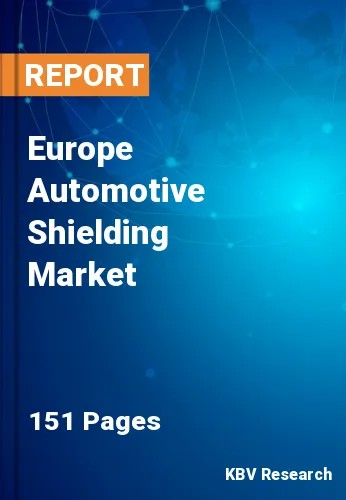The Europe Automotive Shielding Market would witness market growth of 3.6% CAGR during the forecast period (2023-2030).
The pursuit of improved fuel efficiency and reduced emissions has led to a focus on lightweighting in vehicle design. Lightweight materials and structures are being employed to achieve these goals, posing a challenge for shielding technologies that need to provide adequate protection without adding significant weight to the vehicle. Lane-keeping assistance, adaptive cruise control, and collision avoidance systems are examples of ADAS features that have become increasingly prevalent, which has increased the complexity of in-vehicle electronics. This is crucial to prevent interference that could compromise the accuracy and functionality of these safety-critical systems.
Moreover, shielding is essential in electric and hybrid vehicles to protect the power electronics and electric drivetrain components from electromagnetic interference. This includes shielding for batteries, inverters, and electric motors to ensure optimal performance and longevity. Integrating advanced infotainment systems, navigation systems, and connectivity features requires effective shielding to prevent interference that could degrade signal quality. As vehicles become more connected, this application's demand for shielding solutions is rising. Safety-critical systems, such as airbag deployment and collision avoidance radars, rely on precise sensor data. It is employed to prevent interference that could compromise the accuracy of these systems, ensuring a rapid and reliable response in critical situations.
The rise of autonomous driving in Europe is expected to significantly contribute to the demand for this shielding. As vehicles become more automated and rely on sophisticated electronic systems, effective shielding to mitigate electromagnetic interference (EMI) and radiofrequency interference (RFI) becomes paramount. According to the International Energy Agency, the EU established new CO2 emissions targets as part of the "Fit for 55" initiative. These targets include a 55% reduction in passenger car emissions by 2030 relative to 2021 and a 2035 target that effectively mandates all new light-duty vehicles to possess zero exhaust CO2 emissions. Therefore, the growing need for autonomous driving and fuel efficiency measures in European countries will boost the demand for automotive shielding in the region.
The Germany market dominated the Europe Automotive Shielding Market by Country in 2022 and would continue to be a dominant market till 2030; thereby, achieving a market value of $1,521.8 million by 2030. The UK market is exhibiting a CAGR of 2.7% during (2023 - 2030). Additionally, The France market would experience a CAGR of 4.4% during (2023 - 2030).
Based on Shielding Type, the market is segmented into Heat Shielding, and Electromagnetic Induction shielding. Based on Application, the market is segmented into Electromagnetic Compatibility, Electronic Control Modules, Infotainment Systems, Advanced Driver Assistance Systems, and Others. Based on Vehicle, the market is segmented into Passenger, and Commercial. Based on Material, the market is segmented into Copper, Plastics, Aluminum, Foam, Nickel, Stainless Steel, and Others. Based on countries, the market is segmented into Germany, UK, France, Russia, Spain, Italy, and Rest of Europe.
Free Valuable Insights: The Global Automotive Shielding Market will Hit USD 28.8 Billion by 2030, at a CAGR of 4.4%
The market research report covers the analysis of key stake holders of the market. Key companies profiled in the report include Dana Incorporated, Tenneco, Inc., Henkel AG & Company, KGaA, Morgan Advanced Materials plc, 3M Company, Parker Hannifin Corporation, RTP Company, Inc., Autoneum Holding AG, Tech Etch, Inc. and Marian, Inc.
By Shielding Type
By Application
By Vehicle
By Material
By Country
Our team of dedicated experts can provide you with attractive expansion opportunities for your business.

